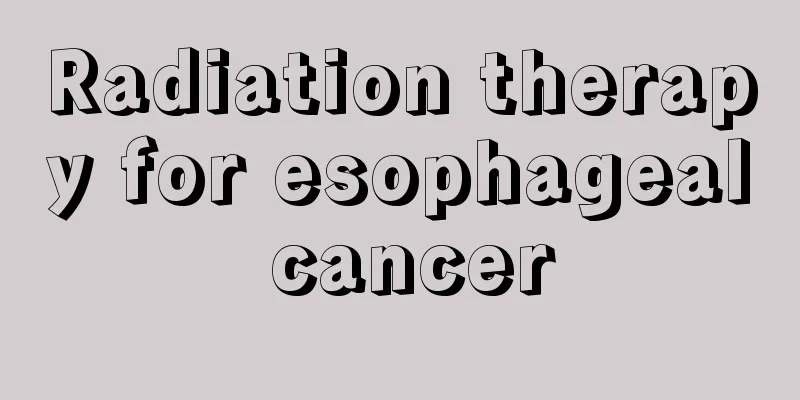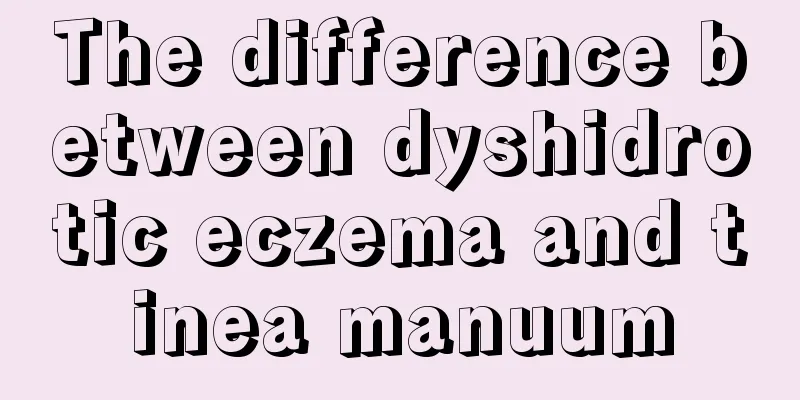Radiation therapy for esophageal cancer

|
The sensitivity of esophageal cancer to radiotherapy is classified according to the gross pathological type. The intracavitary type and fungus type are more sensitive than the medullary type, while the ulcerative type and stricture type are less sensitive to radiation. (I) Indications and contraindications 1. Patients with indications for radical radiotherapy are in good or moderate general condition; have no distant metastasis, and the lesion does not exceed 7 cm; the lesion is suitable for surgical resection, but the patient refuses surgical treatment. 2. Relative contraindications include cachexia, perforation, severe tracheal or large blood vessel invasion confirmed by CT, severe chest and back pain, elevated white blood cell count, etc. 3. Palliative radiotherapy For some cases that are considered contraindications to radical radiotherapy, if the patient is in good general condition, palliative radiotherapy can be given to relieve symptoms, such as solving eating problems. For some radiation-sensitive lesions, radiotherapy can relieve dysphagia and relieve pain. After palliative radiotherapy, some patients' tumors are relieved and reduced, and radical radiotherapy can be considered according to the patient's condition. 2. Radiotherapy technology 1. Design of irradiation field According to the results of esophageal barium meal angiography and CT examination, the barium swallow is positioned on the simulation positioning machine. If conditions permit, the TPS plan is used to optimize the irradiation field. In recent years, the application of CT simulation positioning planning system can make the field setting of esophageal cancer radiotherapy more accurate, which is particularly suitable for esophageal tumors at the cervical segment and the entrance of the thorax. The length of the irradiation field, observed under the simulator, generally exceeds the upper and lower ends of the lesion by 3-4cm, and the width is based on the CT examination results. If there is no obvious external invasion, it is generally 5-6cm; if the external invasion is obvious or accompanied by lymph node metastasis, the irradiation field is appropriately widened to 6-8cm. Conventionally, 3 fields are used for irradiation, namely the front vertical field and the back two angle fields. The patient is in the supine position, and the gantry angle is plus or minus 1200-1300. According to the two-dimensional TPS display, the dose distribution of this method is relatively reasonable. Make the irradiation of the spinal cord and lungs within the normal tolerance range. Because the cervical and upper thoracic esophagus are close to the spine, it is often difficult to avoid the spinal cord when using conventional three-field irradiation. In this case, two anterior field angles can be used for irradiation, with a gantry angle of plus or minus 450-50. Or the left posterior and right anterior oblique fields can be used to avoid the spinal cord as a principle. Sometimes, due to the curvature of the spine, the upper end of the upper esophageal cancer patient is almost close to the spine, and the upper spinal cord cannot be avoided when irradiating with two posterior oblique fields. In such cases, irregular fields can be used, and the upper end close to the spine can be blocked with lead blocks. If CT simulation positioning and 3D CRT technology are used, an optimized radiotherapy plan will be obtained, and the treatment will be more ideal. 2. Radiation dose Regarding the radical radiation dose for esophageal cancer, according to years of research, the appropriate dose is 60-70Gy. Researchers conducted statistical analysis on four dose groups and found that: in the 41-50Gy group, the 5-year survival rate was 3.5%, and the 10-year survival rate was 0%; in the 51-60Gy group, the 5-year survival rate was 9.2%, and the 10-year survival rate was 5-6%; in the 61-70Gy group, the 5-year and 10-year survival rates were 15.9% and 6.6010, respectively; in the dose group greater than 70Gy, the 5-year and 10-year survival rates were 4.6% and 1.1%, respectively. The Cancer Hospital of the Chinese Academy of Medical Sciences summarized the pathological examination results of the specimens removed by radiotherapy surgery: the cancer-free rate was 24% above 40Gy, 33.3% above 50Gy, 31.8% above 60Gy, and 33% above 70Gy. It can be seen that the cancer-free rate of local resection specimens for esophageal cancer radiotherapy is not completely proportional to the increase in dose. Increasing the dose above 60Gy did not significantly improve the survival rate. In clinical work, it is found that if the lesion does not shrink significantly when the treatment dose reaches 40Gy, increasing the dose will not be effective. At this time, if the patient can tolerate the surgery and the lesion is in a suitable location, surgical treatment should be sought. |
<<: Early screening methods for lung cancer
>>: Pathological classification of skin cancer
Recommend
Where should I use moxibustion if the follicles are not developing well?
Poor follicular development is a problem that tro...
How to quickly peel garlic with a bottle
Garlic is a very important condiment in our lives...
The inner thigh hurts when I walk
If the pants you wear are made of rough material ...
Do babies need to drink water?
Water is the most essential nutrient for the huma...
What is the level of rectal cancer stage 2?
What is the level of rectal cancer stage 2? 1. Re...
What should patients with gastric cancer pay attention to during gastrointestinal decompression
Gastrointestinal decompression care is an importa...
What are the traditional Chinese medicines for treating liver cancer? 5 kinds of traditional Chinese medicines can treat liver cancer
As we all know, the current treatment for cancer ...
What are the symptoms of obsessive-compulsive disorder
Many people believe that they have obsessive-comp...
Symptoms of prostate cancer bone metastasis
Among male diseases, prostate disease is the most...
What's wrong with the nose congestion?
Nasal congestion is actually a manifestation of n...
Will kidney yang deficiency cause tinnitus
Will kidney yang deficiency cause tinnitus? Kidne...
How nasopharyngeal carcinoma spreads
The nasopharynx is hidden, and nasopharyngeal car...
Will myopia increase the more I wear glasses?
Some people in life have myopia, but they are unw...
5 commonly used herbal medicines for malignant bone tumors
Botanical drugs refer to drugs extracted from pla...
Can expired condensed milk be used to wash the face?
Many people think that washing your face with mil...









